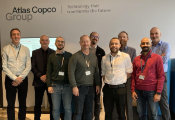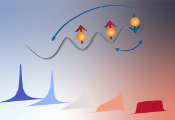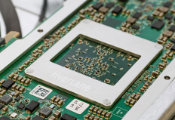Modular, Scalable Hardware Architecture for a Quantum Computer
Quantum computers hold the promise of being able to quickly solve extremely complex problems that might take the world’s most powerful supercomputer decades to crack. But achieving that performance involves building a system with millions of interconnected building blocks called qubits. Making and controlling so many qubits in a hardware architecture is an enormous challenge that scientists around the world are striving to meet.

Toward this goal, researchers at MIT and MITRE have demonstrated a scalable, modular hardware platform that integrates thousands of interconnected qubits onto a customized integrated circuit. This “quantum-system-on-chip” (QSoC) architecture enables the researchers to precisely tune and control a dense array of qubits. Multiple chips could be connected using optical networking to create a large-scale quantum communication network.
By tuning qubits across 11 frequency channels, this QSoC architecture allows for a new proposed protocol of “entanglement multiplexing” for large-scale quantum computing.
The team spent years perfecting an intricate process for manufacturing two-dimensional arrays of atom-sized qubit microchiplets and transferring thousands of them onto a carefully prepared complementary metal-oxide semiconductor (CMOS) chip. This transfer can be performed in a single step.
“We will need a large number of qubits, and great control over them, to really leverage the power of a quantum system and make it useful. We are proposing a brand new architecture and a fabrication technology that can support the scalability requirements of a hardware system for a quantum computer,” says Linsen Li, an electrical engineering and computer science (EECS) graduate student and lead author of a paper on this architecture.
Li’s co-authors include Ruonan Han, an associate professor in EECS, leader of the Terahertz Integrated Electronics Group, and member of the Research Laboratory of Electronics (RLE); senior author Dirk Englund, professor of EECS, principal investigator of the Quantum Photonics and Artificial Intelligence Group and of RLE; as well as others at MIT, Cornell University, the Delft Institute of Technology, the U.S. Army Research Laboratory, and the MITRE Corporation. The paper appears today in Nature.




































